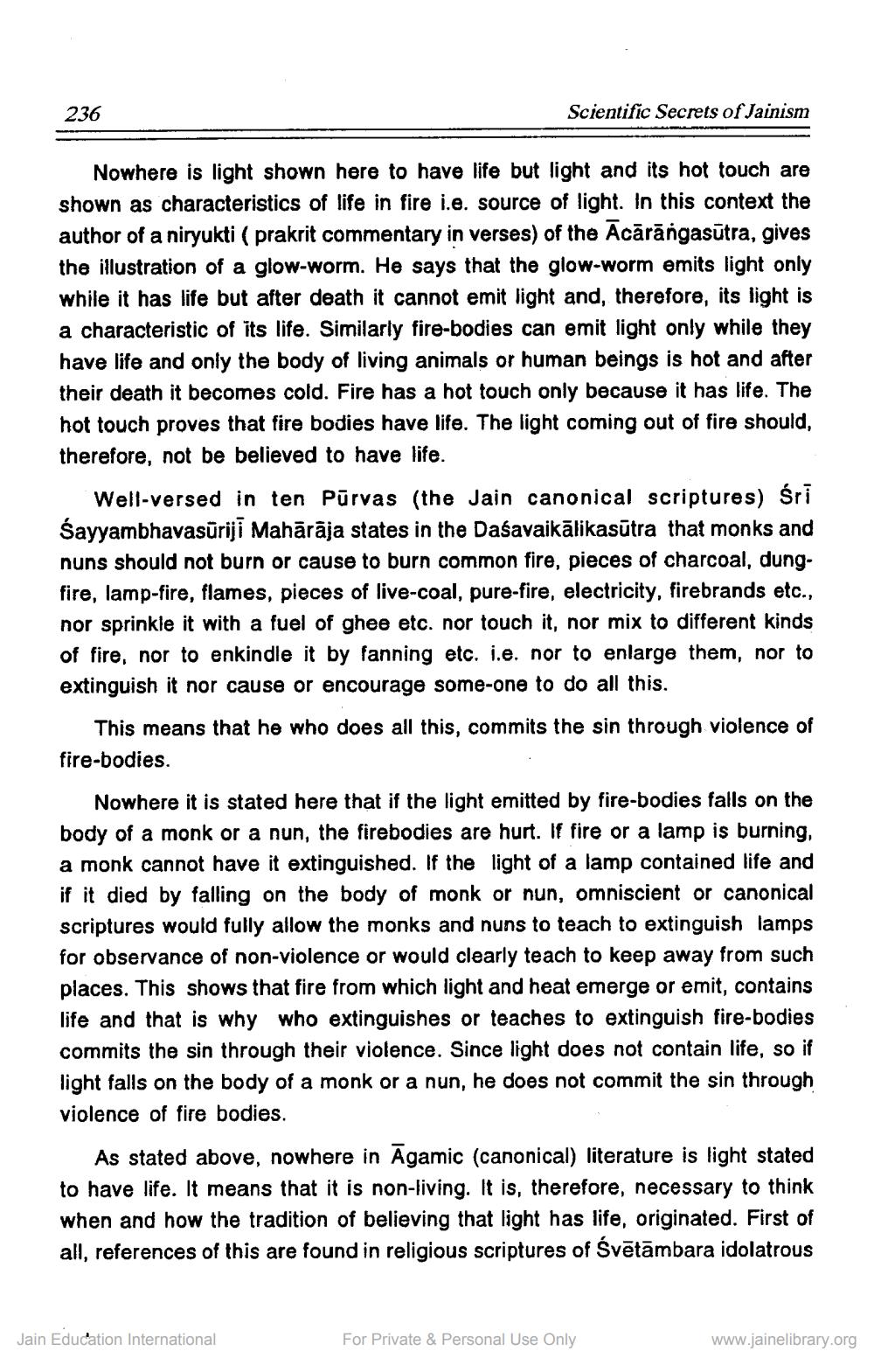________________
236
Scientific Secrets of Jainism
Nowhere is light shown here to have life but light and its hot touch are shown as characteristics of life in fire i.e. source of light. In this context the author of a niryukti ( prakrit commentary in verses) of the Acārāngasūtra, gives the illustration of a glow-worm. He says that the glow-worm emits light only while it has life but after death it cannot emit light and, therefore, its light is a characteristic of its life. Similarly fire-bodies can emit light only while have life and only the body of living animals or human beings is hot and after their death it becomes cold. Fire has a hot touch only because it has life. The hot touch proves that fire bodies have life. The light coming out of fire should, therefore, not be believed to have life.
Well-versed in ten Pūrvas (the Jain canonical scriptures) Śri Śayyambhavasūriji Mahārāja states in the Daśavaikālikasūtra that monks and nuns should not burn or cause to burn common fire, pieces of charcoal, dungfire, lamp-fire, flames, pieces of live-coal, pure-fire, electricity, firebrands etc., nor sprinkle it with a fuel of ghee etc. nor touch it, nor mix to different kinds of fire, nor to enkindle it by fanning etc. i.e. nor to enlarge them, nor to extinguish it nor cause or encourage some-one to do all this.
This means that he who does all this, commits the sin through violence of fire-bodies.
Nowhere it is stated here that if the light emitted by fire-bodies falls on the body of a monk or a nun, the firebodies are hurt. If fire or a lamp is burning, a monk cannot have it extinguished. If the light of a lamp contained life and if it died by falling on the body of monk or nun, omniscient or canonical scriptures would fully allow the monks and nuns to teach to extinguish lamps for observance of non-violence or would clearly teach to keep away from such places. This shows that fire from which light and heat emerge or emit, contains life and that is why who extinguishes or teaches to extinguish fire-bodies commits the sin through their violence. Since light does not contain life, so if light falls on the body of a monk or a nun, he does not commit the sin through violence of fire bodies.
As stated above, nowhere in Āgamic (canonical) literature is light stated to have life. It means that it is non-living. It is, therefore, necessary to think when and how the tradition of believing that light has life, originated. First of all, references of this are found in religious scriptures of Svētāmbara idolatrous
Jain Education International
For Private & Personal Use Only
www.jainelibrary.org




